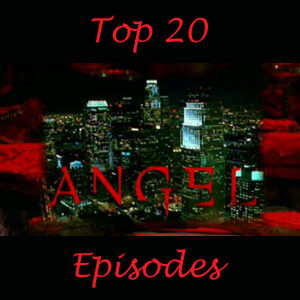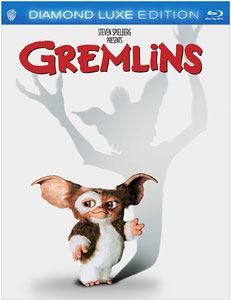I’m not as big of a Christmas movie guy as I am a Christmas TV guy, but I have settled on my answer – at least for now – when someone asks me my favorite Christmas movie: “Gremlins”(1984). Growing up, I was more familiar with the 45 rpm read-along record, which in many ways is actually scarier than the film thanks to the ominous narrator and the intense music from the Buena Vista library that can also be heard on “Star Wars” records like “Planet of the Hoojibs” (In another link, the voice actor for Billy also voiced Luke Skywalker).
Later, I began to understand that “Gremlins” is not just a horror film, but also a dark comedy – while still hitting on the all the Christmas tropes that make it family friendly. It also occupies a distinct place in cinema history as one of the films – along with “Indiana Jones and the Temple of Doom” – that inspired the invention of the PG-13 rating (not a safe film like a PG, but not quite an adult film like an R). Here are 10 more random observations about “Gremlins” in the wake of my latest holiday screening.
1. Like Yoda (1980) and E.T. (1982), Gizmo is one of those early-’80s animatronic-and-puppeteered characters who won over the hearts of viewers who accepted him as a real creature. If one wants to nitpick, Gizmo and the Gremlins are a bit herky-jerky here and there (the scene where the mob of Gremlins walks down the main street is notably imperfect stop-motion). But it’s real enough. More “perfect” made-up creatures have recently been brought to life – like Paul the alien and Ted the teddy bear – but they somehow aren’t quite as lovable as Gizmo.
2. Billy (Zach Galligan) is the Everyman young adult and Kate (Phoebe Cates) is the adorable Girl Next Door if there ever was one. Billy spends most of his time in his room with his dog, Mogwais, a stack of comic books and a TV playing old movies, with occasional visits from his friend Pete (Corey Feldman). Billy is a paragon of gawkiness, but Kate likes him anyway. There are no relationship troubles in the narrative: The uncool kid simply gets the cute girl, making this a horrible film for preparing uncool kids for reality.
3. Before 1984, when people said “gremlin,” they thought of imaginary creatures that caused machinery to inexplicably malfunction – a term that originated in the World Wars, possibly derived from “goblin.” Indeed, WWII veteran Mr. Futterman uses this definition, which is where the characters get their descriptor. A “Gremlin” was also a model of car and a slang term for a surf-beach bum. Sacred Heart High School in Sedalia, Mo., is one of very few schools in the country that uses “Gremlins” as a nickname. Their mascot is a small creature that looks somewhat like a gnome. The idea of a gremlin as an actual creature didn’t originate with this film, but it was certainly popularized by it. Today, when you type “Gremlins” into Google Images, every picture is of a Gremlin or Mogwai.

4. I love the warm, Yuletide vibe of “Gremlins,” from Rand doing some Christmas shopping in Chinatown to the Rockwellian feel of Kingston Falls, N.Y. The final shot, as the old man walks off with Gizmo, is blatantly a matte painting, but it doesn’t bother me. And among the details that add verisimilitude to this crazy story is the fact that Rand is an inventor – his faulty inventions are all over the house, leading to several laughs early in the film, such as the exploding juicer.
5. When the Gremlins go caroling, they sing the theme song from “Gremlins.” This is the most blatant of several “Huh?” moments in regards to these creatures’ learning abilities. Another example is when Stripe sees the neon “candy” sign and knows what it means. They also learn spoken language, saying things like “Milk Duds” and “gun.” Gizmo himself says “bright light” and – in a touching farewell — “Billy.”
6. The “Gremlins” theme song by Jerry Goldsmith is an earworm, and so is the theme song for Gremlins Cereal. I heard it in 1984, probably while watching “Ewoks” and “Droids” on Saturday mornings, and again just recently on YouTube, but I could’ve sung it for you at any time in the intervening three decades. It was stored somewhere in my brain the whole time.
7. Although the origin of the Mogwai is not explained in the film, one could make a case that they are alien in nature. The film is very Spielbergian – indeed, Steven Spielberg, riding high off of “Close Encounters” and “E.T.,” produced “Gremlins” – and water’s negative effect on Mogwai also calls to mind the extraterrestrials in M. Night Shyamalan’s “Signs.” After all, how could water affect an Earth-evolved creature negatively? The Gremlins’ reproductive cycle is also similar to the xenomorphs from “Alien.” One could also argue that they are mystical creatures, as feeding them “after midnight” causes them to transform. (Although a lot of people say “How do the Mogwai know what time zone they are in?,” my biggest gripe was always the lack of a time frame. For example, “midnight to dawn” is a timeframe, but it is ALWAYS “after midnight.”)
8. The movie’s most talked-about oddity is Kate’s monologue about how her dad died (and therefore, why she hates Christmas). He dressed up as Santa and broke his neck descending the chimney. That’s how Kate learned Santa wasn’t real. I find it to be a harrowing monologue; others find it funny out of the film’s context (or even funny in context, if they are twisted). But everyone agrees it is odd. I think the strangest aspect of the scene is that we don’t see an appropriate reaction from Billy. In fact, he’s doing other things while Kate talks. All he could really do is say “I’m sorry for your loss,” but the absence of that moment is weird as heck. Some of the executives wanted the monologue removed from the film, but it’s obviously necessary to give an answer to why Kate hates Christmas.
9. Once the film’s action kicks into high gear, it is sketchy about what character arcs will see fruition. Gerald (Judge Reinhold), Billy’s rival for Kate’s affections (although not really, as it is blatantly obvious whom she prefers), disappears from the narrative. A deleted scene on the DVD reveals that he was hiding in the bank vault. Although a whole movie theater of Gremlins bites the dust, the only human who definitively dies is the Scrooge stand-in Mrs. Deagle, who gets blasted from an upstairs window in a nice bit of comeuppance. (For all her evil, the fact that her real-estate company’s hours are 10 a.m. to 11:15 a.m. might be what irks me the most.) She simply ain’t moving as she’s sprawled on the sidewalk. The science teacher perhaps didn’t make it, either. And the cops whose car flipped over were no doubt in rough shape. Being a kids’ movie, “Gremlins” isn’t too forthcoming about various folks’ fates.
10. “Gremlins” is a rare movie that has a sequel in a different genre from the original. 1990’s “Gremlins 2: The New Batch” – the origin of which was surmised in a “Key & Peele” sketch — is a straight-up farce, whereas the original tends toward the horror and Yuletide genres. Certainly, it has moments of farce, and this is especially apparent during the Gremlins’ mayhem in the bar and theater. However, in the original we are supposed to care about the fates of the characters and mostly see this as a real small-town event. The sequel is a parody of the whole concept (and anything else it decides to make fun of on a whim).
#Ghostbusters and #Gremlins were both released on June 8, 1984, perhaps the greatest opening double-bill in cinema history. Which is the better movie?
— Cold Bananas Movie & TV Reviews (@coldbananas1) June 6, 2019

